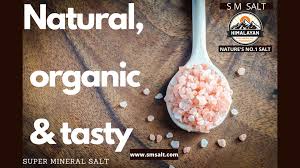
A school PTA can help with many things. It can boost the morale of administrators and teachers. PTAs are able to create a more positive environment between teachers and parents. PTAs may donate school supplies or give small prizes to teachers. PTAs can be helpful for students and teachers, regardless of their specific purpose.
A PTA can be of great benefit to a school. It can improve school climate and bring together parents, teachers, students, and staff. A strong PTA will result in a higher school's attendance and lower dropouts. Parents who invest in their child's education more often make sure that their children go to school. PTAs offer many benefits. The following are just a few of the benefits of joining a school PTA.

A school PTA can support the school by helping to promote important issues in the local community. They can also help the school with its curriculum and other matters. The school can benefit from a PTA if they are active. The pta is a valuable asset to a school, but it can also do damage to the educational system. The school PTA cannot replace the principal.
Recognition from school PTAs is another benefit. Parents can make a difference in the school's culture and get involved. PTAs can also assist students with extra help in school. PTAs offered more support to students and schools in the past. However, they were less influential and difficult to recruit new members due to their inactivity. This is because PTA was not recognized in professional organizations, but rather as a volunteer-based group.
PTAs are an invaluable resource for the school's community. Its members can help to raise funds for various school activities. For instance, they can sponsor fundraising events, organize events for the school, and participate in other school events. With the support of the entire school community, a PTA can grow to a significant size. It is important to be open and transparent about your PTA's goals and the issues that are important to you.

A school's PTA can provide many benefits. PTAs are required to have a webpage explaining their role, responsibilities and how they can be involved. You can either join one of the PTA's websites or social media pages. An active school pta will help you get more involved in your school's community. It is a great way to increase the parent involvement in a school.
FAQ
Which order is best for working out?
It all depends what you want. You should start with heavy weights if your goal is to build muscle mass. Then you can move to cardio. You can then go to strength training if your goal is to lose weight.
Start with cardio if you only want to lose fat. Then add strength training after.
Do cardio first if you are looking to increase muscle mass. It stimulates growth hormones that help build muscle mass.
Before you start your workout, it is a good idea to eat. This will fuel you muscles better, which will make it work harder. You will feel happier during your workout.
Is it possible to go to the gym every day of the week?
Yes, you can go to a gym seven days per week. But not all at once. You must find a time you can do it without feeling exhausted and depleted.
This will help you stay motivated and keep you energized for other activities.
You also need to ensure that you eat well enough during these times. This will ensure you don’t feel tired and sluggish going to the gym.
Last, make sure there aren't any other things competing with your time. Consider avoiding exercising on school night if you have small children. This will keep your attention from your workout.
Are you a cardio-exercise fan?
Cardiovascular exercise offers many benefits. It increases blood circulation, strengthens the heart muscle, boosts stamina, aids in weight loss, and gives you more energy.
Cardiovascular exercise includes running, biking, hiking, swimming, tennis, basketball, soccer, volleyball, football, etc.
Cardio exercises should be avoided at high intensity levels. Doing this could lead to injury.
If you feel fine, only do the cardiovascular exercise.
Do not push yourself to the limit. You could injure yourself if you do.
When you engage in cardiovascular exercise, it is best to warm up first. Gradually increase the intensity.
Be aware of your body and listen to it. You should stop immediately if you feel any pain while doing cardiovascular exercise.
Also, after a cardiovascular workout, it's advisable to take a rest. This will give your muscles time for recovery.
Cardiovascular exercise is essential for losing weight.
It is the most effective way to burn calories and reduce belly fat.
Is weightlifting more effective at burning fat?
You can lose more fat by weight lifting, but only when you do it in conjunction with cardio.
For the best results of weightlifting, do it after cardio exercises.
When done correctly, weightlifting increases your heart rate and oxygen consumption which helps you lose weight.
However, if you don't combine it with cardio you won't see any significant changes to your body composition.
What is a good daily gym routine?
Regular exercise is key for staying in shape. No matter what kind of exercise you do, as long you do it consistently. Consistency is key. For you to get results, you have to stick with it for a longer period of time.
Begin by walking for a few minutes each day. You can gradually increase the amount of exercise you do until you have 30 minutes each day. This could be running, biking, swimming or weight training.
It is important to exercise every day of the week. Don't skip any sessions unless you have a valid reason for not attending.
If you exercise outside, ensure that you wear appropriate clothing and footwear. Also, consider weather conditions and how they might affect your ability or safety while exercising.
When you exercise, drink plenty of fluids. Drinking alcohol during exercise can cause dehydration. Caffeinated beverages such as tea, coffee, and cola should be avoided. These drinks may give you energy but also dehydrate your body.
When you first start exercising, you might feel tired after completing your workouts. If you stick with your training program, you'll feel more awake and alert.
Do I have to exercise every single day?
No! Get at least 30 minutes of moderate-intensity physical activity 5 days a week. That means walking fast enough to be slightly out of breath or biking hard enough to sweat.
Statistics
- Candidates and applicants must pass all four tests at 70% (minimum level) to graduate from Basic Deputy U.S. Marshal (BDUSM) Training. (usmarshals.gov)
- By John Thompson Take a whopping 38% off a set of PowerBlock Pros. (menshealth.com)
- According to the American Heart Association, blood pressure should be checked at least once every two years, beginning at age 20. (my.clevelandclinic.org)
- 10 pounds in a month is likely during a lean bulking phase, especially for beginners. (muscleandstrength.com)
- An estimated calorie range for moderately active adult males falls between 2,200 to 2,800 calories per day, depending on age. (eatright.org)
External Links
How To
How do I lose weight while working out?
Exercise burns calories through increased metabolism and oxygen consumption.
You'll lose weight safely if you exercise at moderate intensity.
These are the top tips for burning fat while you exercise.
-
Cardio exercises include walking, running, swimming, cycling, running and jogging.
-
Do 30 minutes of exercise three times a week.
-
Add strength training to your workouts if you are looking to lose more weight.
-
Avoid intense exercise. It's possible to build muscle, but not lose it.
-
When exercising, make sure to drink lots of water. Water is essential for flushing out toxins and keeping your body hydrated.
-
After exercising, you should drink low-fat protein drinks. Protein shakes can help boost energy and repair muscles.
-
Eat smaller meals throughout the day, so you don't feel hungry between meals.
-
Don't skip breakfast! Skipping breakfast can cause you to feel tired and sluggish.
-
Take care to your mental well-being. Stressful situations can slow down metabolism.
-
Keep a positive attitude. Studies show that people who believe they are overweight gain more weight then those who think they are attractive.
-
Get enough sleep. Lack of sleep makes it harder to burn fat.
-
Always be active. Get up every hour and get moving.
-
Maintain a healthy diet. Eat right to feel satisfied and full for longer.
-
Relaxation is possible by finding ways to relax. An anxious mind won't allow your body release stress hormones, which can lead to the destruction of muscle tissue.
A balanced diet is one that includes all of the essential nutrients required for growth.
Eat six small meals each day instead of three large ones. This gives your body the time it needs to process what you've eat.
You need about 500 milligrams of calcium daily to maintain strong bones. Calcium is found in dairy products like yogurt, fortified milk beverages, orange juices, cereals and bread.
Calcium is found in leafy vegetables, beans and tofu, as well nuts, seeds and cheese.
Vitamin D is necessary for the body to absorb calcium. Vitamin D is found in eggs yolk, fatty fish and fortified foods.
Vitamin E is vital for your skin's health. Vitamin E can also be found in vegetable oil, wheat germ oils, peanuts as well almonds, sunflower seeds and corn.
Your body needs zinc for normal immunity function and wound healing. Zinc is found in oysters, legumes, meats, whole grains, and seafood.
Zinc deficiencies can lead to fatigue, decreased appetite, depression, and reduced immunity.
Insulin resistance is caused by eating too much sugar, which can increase blood glucose levels. Insulin resistance is linked to weight gain.
Insulin resistance develops when there are high levels of free radicals in the bloodstream. Free radicals are molecules that have unpaired electrons, which can cause damage to cell membranes or other parts of your body.
Free radicals come mainly from food additives, pesticides, herbicides, preservatives, smoking, air pollution, radiation, chemicals in cosmetics, lotions, and household cleaning supplies.
Free radical damage can lead cancer, heart disease or diabetes, arthritis, asthma, or other forms of aging.
The best way to avoid free radicals is to eat a balanced diet high in antioxidants. Antioxidants protect against oxidative damage.
Antioxidant vitamins include Vitamin C (found in citrus fruits), beta carotene (found in carrots, sweet potatoes, spinach, broccoli, cantaloupe, apricots, squash, mangoes, peaches, peppers, tomatoes, cabbage, cauliflower, kale, Brussels sprouts, collard greens, watermelon, and strawberries), and Vitamin E (found in nuts, olive oil, avocados, and eggs).
Selenium, copper and manganese are all antioxidant nutrients.
Selenium helps protect cells from oxidative damage caused by free radicals. Selenium can be found in Brazil nuts and liver, kidneys, liver, kidneys, shrimp, cod, turkey and lamb as well as chicken.
Copper protects the brain, eyes, lungs, and red blood cells. Copper is found in shellfishes, poultry, meat, organ meats, and other foods.
Manganese is essential for bone structure. Manganese is found in brown rice, spinach, bananas, prunes, raisins, oatmeal, and lentils.
Zinc helps with normal growth, reproduction, as well as wound healing. Zn can also be found in white fish, lean cuts of meat, poultry, and eggs.